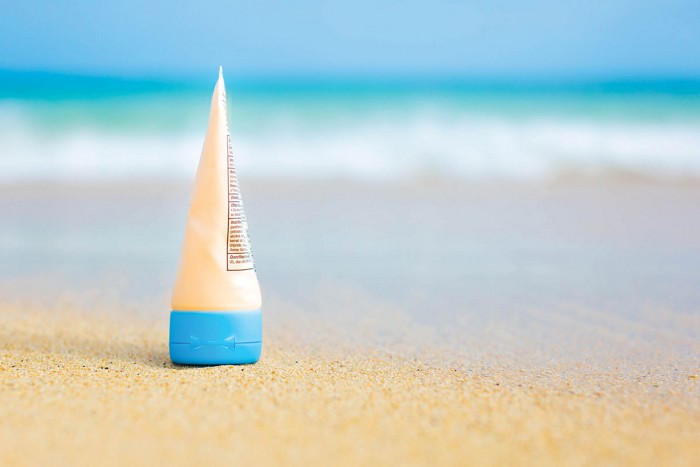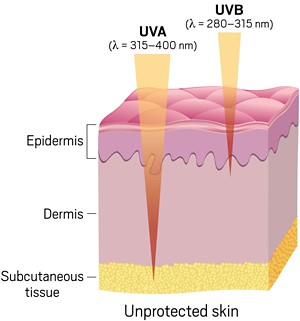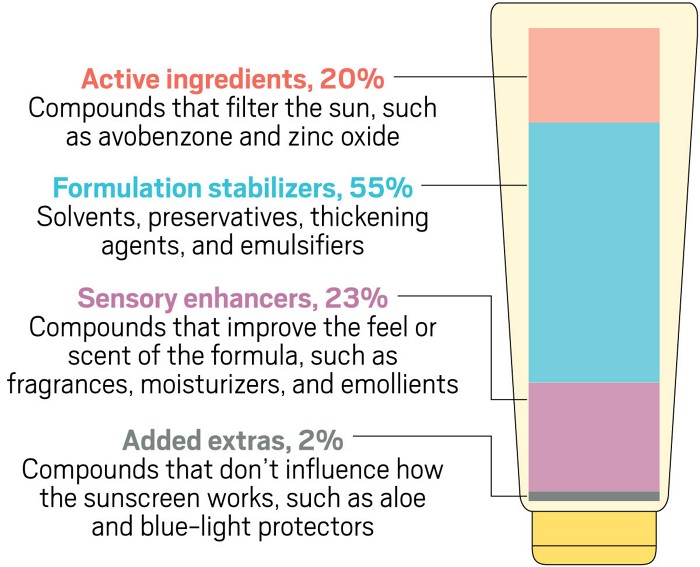Advertisement
Grab your lab coat. Let's get started
Welcome!
Welcome!
Create an account below to get 6 C&EN articles per month, receive newsletters and more - all free.
It seems this is your first time logging in online. Please enter the following information to continue.
As an ACS member you automatically get access to this site. All we need is few more details to create your reading experience.
Not you? Sign in with a different account.
Not you? Sign in with a different account.
ERROR 1
ERROR 1
ERROR 2
ERROR 2
ERROR 2
ERROR 2
ERROR 2
Password and Confirm password must match.
If you have an ACS member number, please enter it here so we can link this account to your membership. (optional)
ERROR 2
ACS values your privacy. By submitting your information, you are gaining access to C&EN and subscribing to our weekly newsletter. We use the information you provide to make your reading experience better, and we will never sell your data to third party members.
Consumer Products
What’s that Stuff
What’s in sunscreen, and how does it protect your skin from the sun’s rays?
UV filters help prevent sunburn and cancer, while other ingredients encourage people to slather sunscreen on their skin
by Leigh Krietsch Boerner
July 21, 2021
| A version of this story appeared in
Volume 99, Issue 27

Everybody needs sunscreen, including people with dark skin. And we need a lot. For the average-sized adult or child, the US Food and Drug Administration recommends using at least a shot glass–sized amount on your bathing suit–clad body every 2 h, even on cloudy days. In addition to blocking all the kinds of sunlight that can damage skin, sunscreen needs to be spreadable and not damage us. Different types of sunscreens achieve these goals in several ways. Here is a look at what the ingredients in a sunscreen tube do.

Active ingredients: 10–30%
Probably the most important parts of sunscreen are the compounds listed as active ingredients. These sun filters, or ultraviolet filters, protect our skin from the sun. Most sunscreens are a mixture of more than one UV filter, says Nada Baalbaki, senior manager of global scientific communication and clinical research at CeraVe, a skin-care company. Companies use a mixture because each sun filter offers different protection across the range of UV wavelengths, she says.
There are two kinds of UV rays from the sun that people need protection from: UVA and UVB. UVA light has longer wavelengths, about 315–400 nm, and UVB rays are somewhat shorter, about 280–315 nm. UVB light can damage the DNA in the outer layer of our skin, called the epidermis, as well as cause sunburn. UVA rays can shoot through to the middle skin layers, called the dermis. They can cause minor damage, such as tanning and wrinkles, as well as trigger DNA damage that can lead to skin cancer. Of the UV rays that reach the earth’s surface, about 90% are UVA, and 10% are UVB. The sun also emits UVC light, but it’s filtered out by the ozone layer and the atmosphere, so doesn’t reach the ground. “The combination and quantity of sun filters is carefully selected to ensure proper coverage across the UVA and UVB range to provide broad-spectrum protection,” Baalbaki says.
The active ingredients in sunscreens protect our skin by either absorbing or reflecting UV light. Currently, 16 sun-filtering ingredients are approved by the FDA. But sunscreen makers in the US use only 8 regularly: avobenzone, homosalate, octinoxate, octisalate, octocrylene, oxybenzone, titanium dioxide, and zinc oxide. In Europe, Australia, and Japan, where sunscreens are classified as cosmetics, therapeutics, or quasi drugs, other compounds have also been approved for use. But the FDA classifies sunscreens as drugs, which is part of why sunscreen ingredients have a notoriously slow approval process in the US.
Sunscreen ingredients

All UV filters fall into one of two categories: mineral (or physical) or organic (or chemical) sunscreens. TiO2 and ZnO are both considered physical filters. Often you’ll hear that these work by creating a physical barrier on the skin to reflect UV rays away. “It’s not really that black and white,” says independent cosmetic chemist Perry Romanowski. “The mineral ones block [UV rays] about 5% of the time, but 95% of it is being absorbed.” The reflected light is responsible for the white cast often seen with mineral sunscreens, he says. The absorbed light gets radiated as heat.
Absorbing and dissipating the energy of the photons is the only way the organic sunscreens work. Compounds like avobenzone, homosalate, and octinoxate are organic compounds with a handy benzene ring. “That benzene ring can absorb the photon, and then it dispenses that light energy to essentially become heat energy,” Romanowski says. The aromatic ring goes into an excited state, and as the electron falls back down, it releases the energy as heat. “You’re heating up your skin a little bit, but not in a way that anyone would notice,” he says. Organic sunscreens can also generate free radicals, Romanowski says, which is why sunscreen makers often add antioxidant ingredients as well.

The FDA estimated that in 2016 people in the US used over 28 million kg of each of five sun filters, all organics. The next most-used filter was another organic filter, octinoxate, which people used a mere 8.6 million kg of. Last on the most-used list were two mineral sun filters. In 2016, people slathered on around 5 million kg of each TiO2 and ZnO. The other eight chemicals that are FDA approved for sunscreens aren’t manufactured anymore, “or they have such a bad reputation that nobody uses them,” Romanowski says.
One example is 4-aminobenzoic acid, also called p-aminobenzoic acid or PABA. Once popular in sunscreens, the compound fell out of favor because people sometimes developed a skin allergy to it. Then in the 1980s, scientists found that PABA may increase the likelihood of UV damage from the sun. The ingredient is not used in sunscreens anymore and has been banned in the European Union since 2008. However, PABA still remains on the FDA’s approved list in the US.
Other FDA-approved sun filters are also falling out of favor, Romanowski says, especially because of concerns about their effects on coral health. A 2021 law in Hawaii bans the use of sunscreens with oxybenzone and octinoxate because of coral reef concerns. Scientists found that these two compounds contribute to coral bleaching, which makes the organisms susceptible to disease. Some research also suggests that octocrylene might damage coral.
In addition to those sunscreen concerns, the FDA found evidence that the six organic sunscreens can be absorbed through the skin. This doesn’t mean that they’re unsafe, Janet Woodcock, then the director of the FDA’s Center for Drug Evaluation and Research, said in a statement, but instead that industry needs to do more safety and exposure testing.
Formulation stabilizers: 50–60%
Other ingredients in sunscreens don’t block the sun’s light, but rather help the active ingredients stay in solution and not go bad. The largest proportion of these ingredients are the solvents, which are usually water, Romanowski says, although they include some oils too. Preservatives, such as phenoxyethanol and tocopherol acetate, keep the active ingredients from breaking down or the formulation from spoiling or having a shorter shelf life. Sunscreens may also contain thickening agents, emulsifiers, chelating agents, pH-balancing agents, antioxidants, and more. These ingredients keep the active ingredients in solution, homogeneous, spreadable, and functional.
Sensory enhancers: 13–33%
Some ingredients in sunscreen change the way the product feels or smells. These compounds are what make people want to wear sunscreen, or they at least help make people less averse to wearing it. For example, “the base must be stable and spread easily and evenly on the skin to ensure proper coverage for protection,” CeraVe’s Baalbaki says. Romanowski refers to the ingredients that enhance the feel of sunscreen as “aesthetic modifiers.” “These are things like moisturizing ingredients, fragrances, and emollients. Things that can affect the way that it feels on the skin,” he says. Companies can technically sell sunscreens that contain only the sun filters, but such products would be grainy or greasy and incredibly difficult to spread, he says.
Added extras: 2%
The last little bits of sunscreen formulation are the extras, or what Romanowski calls “claims ingredients.” He describes these as the ingredients that sunscreen companies add to make people look at the label and want to buy their formulas. “They don’t actually have an impact on how the formula works,” he says. Aloe is a common example of an extra ingredient, he says. “At best, aloe is a humectant, so it’s going to help attract moisture,” Romanowski says. But it doesn’t work nearly as well as glycerin, usually added to sunscreen lotions to do that job. Other ingredients that fall under this “extras” category are compounds that companies say can protect skin against pollution or blue light. “There’s scant evidence that blue light is actually a measurable problem,” he says. Having blue-light-filtering ingredients in a sunscreen won’t make any difference to your skin, Romanowski says. “It’s hard in an industry where everybody can make the same products,” such as sunscreens, he says. “You’ve got to make your product stand out.” That’s what this category of ingredients is for.


Join the conversation
Contact the reporter
Submit a Letter to the Editor for publication
Engage with us on Twitter